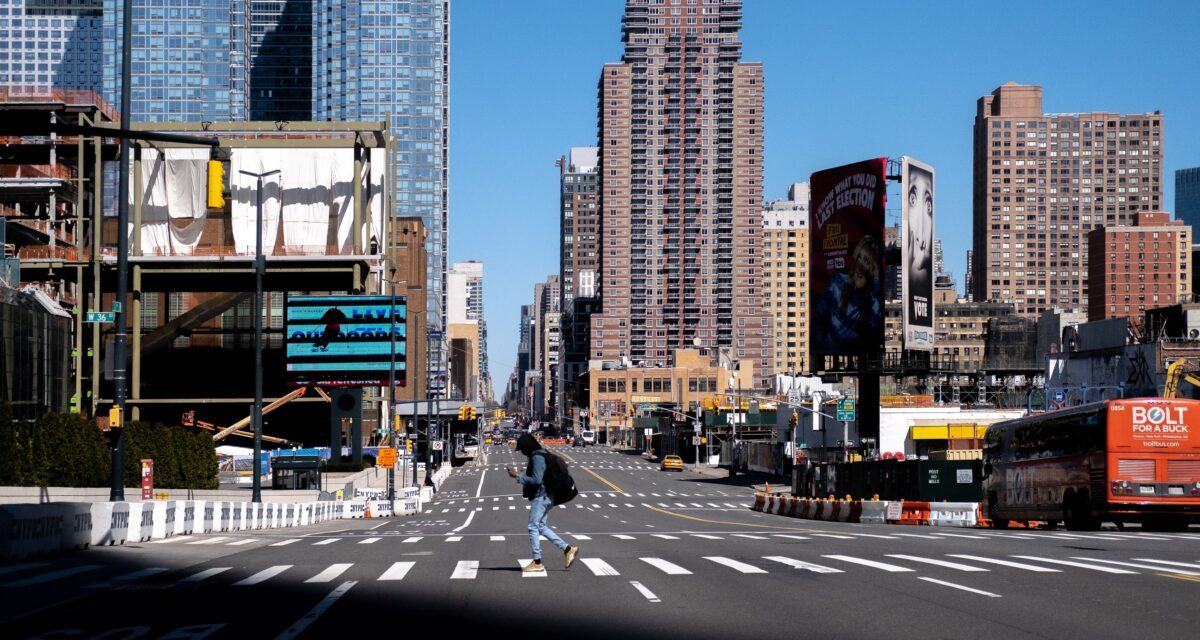The coronavirus pandemic and its aftermath could transform the landscape for U.S. businesses.
With a larger remote workforce, expanded delivery options and lingering health fears likely to last long after the pandemic is under control, business owners and entrepreneurs are asking tough questions and bracing for an uncertain future.
Businesses that pay richly for offices and storefronts in bustling downtowns are reconsidering whether high rents and tight crowds still make sense. A national wipeout of small businesses may leave plenty of vacated real estate for major companies to fill. And shortfalls in federal aid for struggling businesses could deepen the economic damage to be repaired when the pandemic subsides.
“We know that we’ve lost a lot of small businesses. New businesses are the way that we should be focused on filling those gaps,” said John Lettieri, president and CEO of the Economic Innovation Group (EIG), a think tank focused on entrepreneurship.
“You really have to put the pedal down on jobs, on business creation both to help fill the loss —the missing pieces of small businesses that have died off — but also to pick up the slack in the labor market,” he added.
The coronavirus pandemic delivered the biggest shock to the U.S. economy since the Great Depression and forced thousands of businesses to figure out how to survive in a world where gatherings in close quarters could be deadly.
Many businesses have shifted most or all of their staff into working from home, accelerating a rise of teleworking that began long before the pandemic. Others turned to contactless delivery and pickup options to serve customers unable to jam into crowded dining rooms and narrow aisles.
The recent beginning of coronavirus vaccinations has fueled hopes that the U.S. can return to some semblance of normal life by the second half of 2021. Even so, some pandemic-era adaptations are likely to last long after COVID-19 is contained and leave an enduring impact on how American businesses operate.
Nearly 42 percent of the U.S. workforce is working from home, according to a survey of managers conducted by job recruitment firm Upwork. While only 12.3 percent of the US workforce teleworked before the pandemic, roughly 27 percent is still expected to work remotely by December 2021, according to the survey.
“Businesses say remote work continues to be going better than anticipated and it’s even improved since the start,” wrote Upwork chief economist Adam Ozimek.
“It, then, is no surprise that the future will include more remote and more hybrid teams beyond 2021 and for the long run,” he wrote.
A steady shift toward remote work could leave a lasting mark on downtowns and business districts across the US.
John Worth, an executive vice president at the National Association of Real Estate Investment Trusts (Nareit), expressed confidence that quarantine-weary workers will be eager to return to the office once it’s safe. Even so, he ceded that companies are already making tough decisions about renewing leases for large or expensive offices, moving to areas with lower costs, or permanently reducing their footprints.
“We’re going to see changes. Those changes are going to have a material impact, but I don’t see the post-COVID world being so dramatically different from the pre-COVID world that we can’t recognize it,” he said.
While some large offices and metroplexes will survive the pandemic, experts fear that the small businesses that depend on them may not.
Restaurants and bars that depend on lunch rushes, business meals, happy hours and office parties have been some of the earliest casualties of COVID-19. The pandemic also bolstered the rise of e-commerce and non-store retailers, which were among the only sectors of the industry to see positive sales growth in November — typically a massive month for stores.
The arrival of winter also bodes poorly for businesses that turned to outdoor dining and sales to make up for lost revenue, and questions about the size and scope of a pending aid bill means thousands more could go under before the pandemic subsides.
Major corporations, on the other hand, have leaned on cash reserves, the benefits of scale, low interest rates and massive Federal Reserve lending facilities to stay afloat.
Those dynamics position big businesses to scoop up the remains left by smaller competitors that couldn’t make it to the other side, replacing mom-and-pop shops and restaurants with chains and franchises.
“The pre-existing tilt the economy was on towards older incumbent firms I think could very well become accelerated by this crisis,” Lettieri said.
“What we saw in the Great Recession was that the firms that were dominant within their industries going into the crisis tended to be the ones that were dominant coming out of the crisis.”
Lettieri added that he’s more optimistic in U.S. entrepreneurship the time around because the resilience of the financial system has set the country up well for making investments in its future. Even so, he warned that allowing too many small businesses to close and failing to end the pandemic as quickly as possible will make the recovery harder than it needs to be.
“The task of returning to normal, the challenges that businesses face post-pandemic are really made worse if the large crop of vulnerable businesses now in hard-hit sectors are not given the bridge that they need to pass the remaining months,” he said.
The Hill





